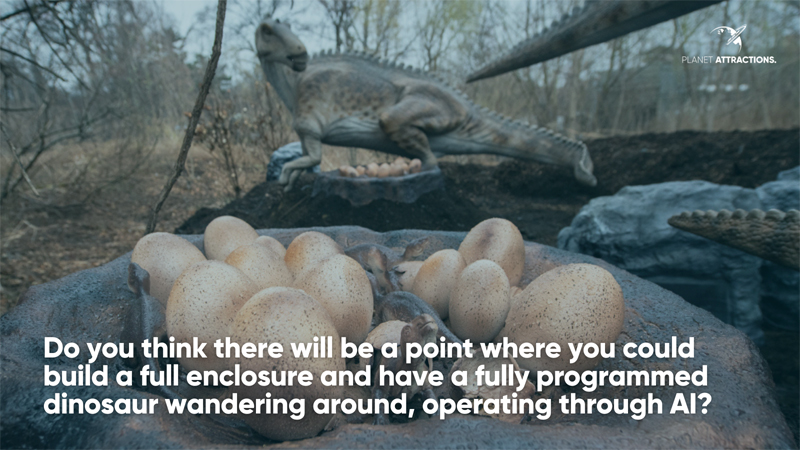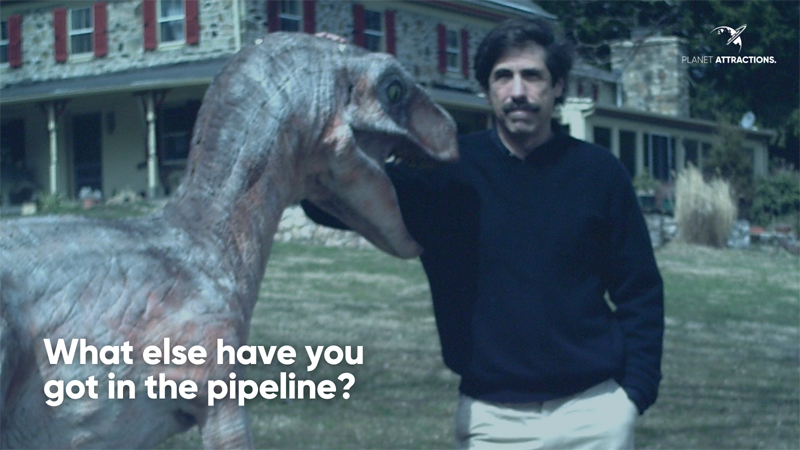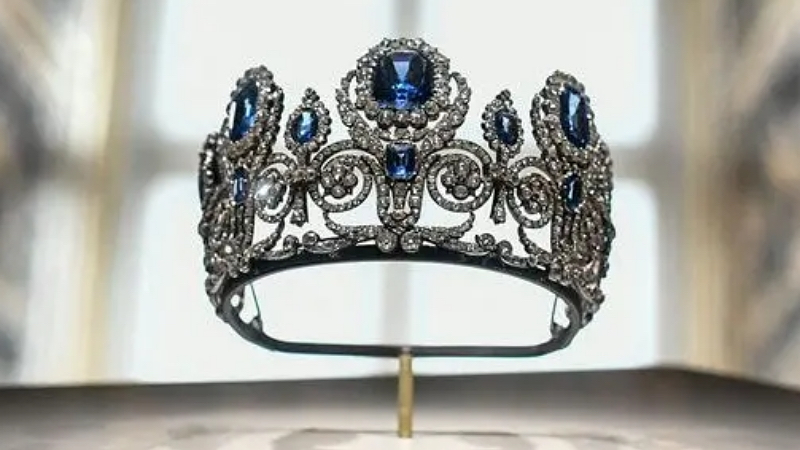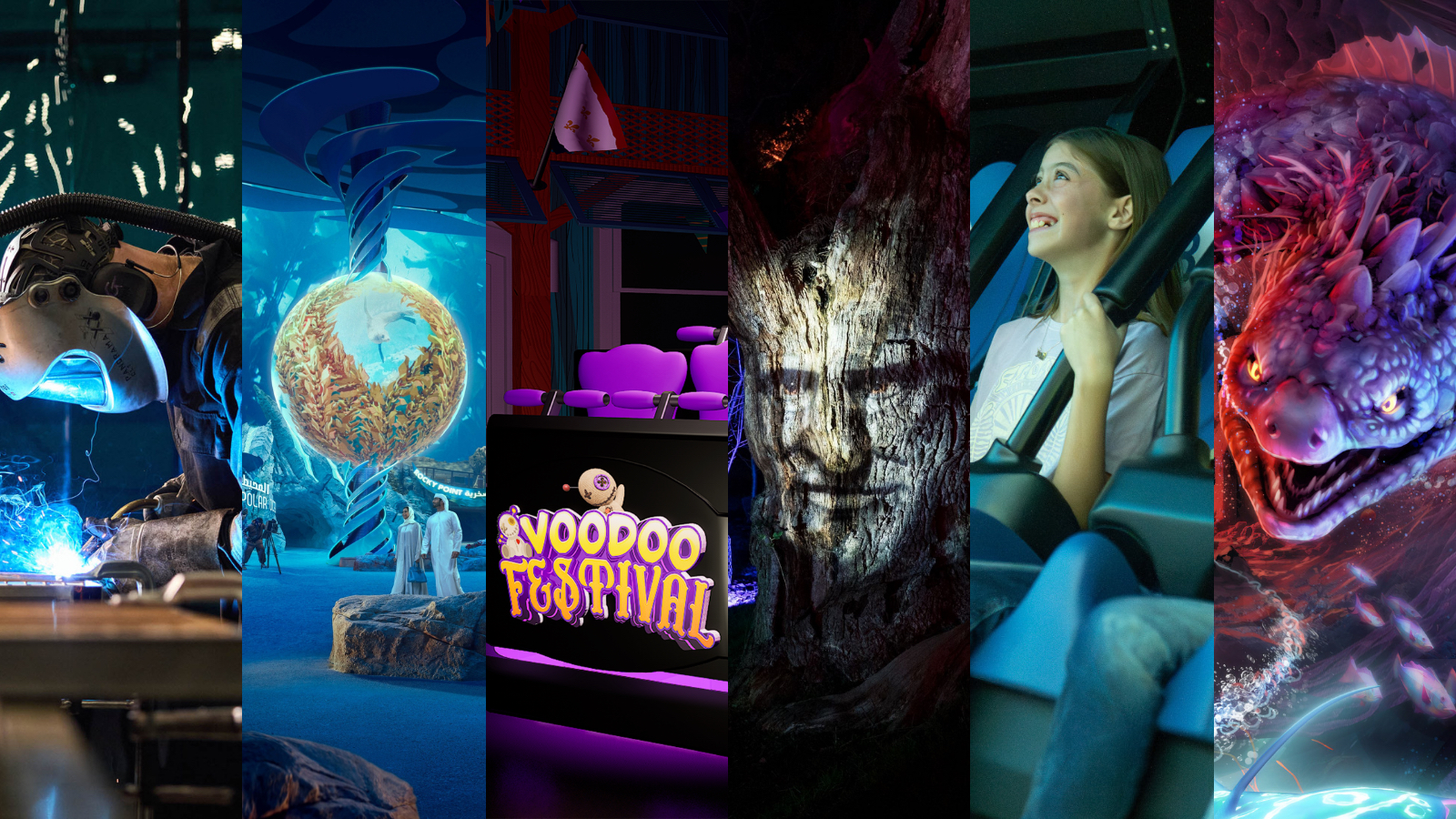|
In part two of our exclusive interview with the man who advised on Jurassic Park and has his own army of robotic dinosaurs, ‘Dino’ Don Lessem returns to talk everything from the business of dinosaurs to the world-famous Trump Toilet

Tom Anstey | Planet Attractions | 11 Mar 2021

 ‘Dino’ Don Lessem advised on the original Jurassic Park movie Credit: Don Lessem ‘Dino’ Don Lessem advised on the original Jurassic Park movie Credit: Don Lessem
A journalist and writer turned dinosaur robotics expert, ‘Dino’ Don Lessem is one of the most interesting people you could ever hope to meet.
Falling hard for the prehistoric beasts in 1988 while working at The Boston Globe, Lessem has had a dino-filled career, launching a travelling exhibition company in 1993, correcting inaccuracies on Jurassic Park, working with both Disney and Universal on their dinosaur-related attractions, and eventually developing robotic dinosaurs in 2017 purely to combat the inaccurately-designed ones that already existed.
From working with Steven Spielberg to having his own dinosaur named after him and even riling up Donald Trump supporters with an iconic piece of protest art, it’s certainly been an eventful few decades for Don. In part two of this two part interview, he talks about the business of dinosaurs, the Trump Toilet, the future of animatronics and more.
For part one of this interview, click here.

“I find all dead stuff cool but nobody’s paying me to say stuff about clams.
There’s something about dinosaurs - I think it’s a genetic defect - that people really love them. I’m not a lifelong dinosaur nerd - I’m a reinvented nerd.
For most people, it starts when you’re about three-years-old. As a mania, it ends when you’re about eight.
When you’re three it’s on the Barney end of fantasy, then very quickly you think these are cool monsters and you can be very powerful like T-Rex. Then I can say Stegosaurus and my parents tell me how great I am because I can say it. Then I collect all these different dinosaurs and there’s a huge market out there.
You get this transition between fantasy and reality by the time you’re about eight or nine, the part of the dinosaurs kids are interested in is digging them up, then they’re interested in modern animals, then they’re interested in girls, then football and then they never come back. I’m still interested in girls and football but I like dinosaurs too.
In adults we retain some glimmer of that fascination but it really is an amazing thing that happens when you are at that age, because you can really picture yourself and the dinosaurs in their world.
When people say what’s so cool with dinosaurs, I come back and say well what’s wrong with you that you aren’t fascinated by the most amazing creatures that ever walked the earth? They were probably the most important thing in terms of evolution and the coolest thing that ever stepped foot on the planet.”

“Over the last three years, we’ve been improving upon how we make our dinosaurs. We know how they look and we can make them look better, but these dinosaurs - any of the ones you see around - will run on the same motor that powers a windshield wiper.
When you’ve got a 60ft dinosaur and you’re trying to run it off a motor like that, something goes wrong and they burn out, so the first thing I did was introduce better motors.
I was pointed in the direction of someone who works in Hollywood, who helped me devise a system using state of the art small pneumatics that don’t make noise and move smoothly.
We’re now at a point, if we want to, that we can make our dinosaurs rap, lip sync to music and generally interact with each-other. We can run a number of programs, so you can have the dinosaurs act more docile in the day and maybe get them to be scarier at night for example. It’s very exciting and means we can do things that we haven’t been able to do before.
A new version of our robots will be debuting later this year. I can’t go into specifics but I went on a television show that gives people money and they gave me the funding to create our new touring exhibition. It’s good for Covid times because this would be like a safari and you drive through a park. As you drive through, you encounter different scenes with these animals and now they can have personalities to them. It will be a lot of fun to do something that hasn’t been done that way before.
One of the other things I should mention is we are the only company that has farting and peeing dinosaurs. The first time we did this was in the Royal Manitoba Museum in Canada. They said it was very sophomoric of me and I said ‘yeah that’s where I’m at’ and they let me do it. CBC reported on the opening and the only story that went viral was that these were the first farting dinosaurs ever to go on display, so it brokered a major threshold in artistic presentation!”

“We know it's happening in the spring. In Europe, we’re talking with Whipsnade. It’s definitely going to be going to Copenhagen Zoo and Leipzig Zoo. In the US, we have about 10 of these exhibits opening. One of the exhibits will be a 110ft Argentinosaurus. We only do life-size versions and that’s as big as life got. It’s four containers for one dinosaur and it takes almost a week just to put that one dinosaur together.”

“The idea of dinosaurs as an attraction in zoos has been going on for about 25 years in the US.
Each generation of ‘dinosaur kids’ comes along every three years, so the optimal time is every three years for your zoo to feature a dinosaur exhibition, which usually increases attendance anywhere between 20% to 50%.
European zoos and their values are different. They didn’t want dinosaurs with no substance to their appearance or their context, so there has been less involvement there.
Today however, Europe’s zoos see that it’s not only popular but they can do it to a high standard in terms of content. It will be a fast growing thing.”

“I designed a theme park in Texas that unfortunately never got built. We were going to do that - have a zoo, but then some of the enclosures would feature extinct animals designed to seem as real as the others.
To make them seem real, you would have had to view them from a distance or better yet to use projection.
Universal spent millions of dollars on a pair of triceratops that were part of their Jurassic Park attraction when it first opened.
They were built by a company in Canada that had built a lunar landing device. They were the most over-engineered, brilliant dinosaurs. They could climb steps, react to you - if you were scared, they would be nice, if you were aggressive they would fight back. It was an incredible level of interaction but it was totally unnecessary because they wanted to do the same six minute show for everybody on their way to going on a ride, so they never really used all the capabilities of this.
They eventually changed the ride and got rid of that feature. When I was last at Universal, I asked someone what happened to the robots. He told me they were breeding at the farm, I told him he didn’t need to be in character but I never found out. I think it would be very cool to have an arc so to speak - a zoo of all life - past and present.”

“Animal Kingdom has this dinosaur section and Disney has this obsession with backstory, which I think is kind of cool. It’s not all about the money.
For this, they wanted a garden of surviving plants from dinosaur times. They went out all over the world and collected the best arboretum of ancient trees, which is still there but nobody knows. I just love it that they went to that much trouble.
They were interested in creating all the backstories that you wouldn’t even notice. Who are the people on this dig and what notes have they written? The main thing was that before they opened Animal Kingdom they brought all their advisors, not just the dinosaur people but the people who helped with fundraising programmes or did the voice overs for the safari ride. There were probably a hundred of these odd-ducks - me included - and I met this fundraiser there and now we’re married, so I owe that to Disney.”

“Not enough. Everything is brand driven. They get an audience by attaching an IP to what they do. The good thing about dinosaurs is that they don’t have an agent. They have an intrinsic appeal and they have a great core audience, which needs to be taken advantage of.
What I do see happening overall is switching over to projected experiences. Compared to robots, it’s way superior and it’s much more adaptable.
Museums and theme parks need to update their attractions all the time, the more built the infrastructure you create is, the more expensive and harder it is to get rid of it.
Now 3D is so cool. I tried to do something with National Geographic that didn’t end up happening, but I still hope it will someday. It’s an indoor blackbox experience of around 20,000sq ft, where you walk in the dark and you are with dinosaurs. It would be the next level of projection without glasses. With screens all over the place and tricks like pepper’s ghost, smells, sounds and lighting, you can make people feel that they are among dinosaurs. It would be an unbelievable, convincing, terrifying, fun experience and you would absolutely believe - like you believe Tupac is on-stage when you go to Coachella - that the dinosaurs are really there.
With AR/VR stuff you have to wear equipment. As long as you have the right sight angles for people and you have the limited numbers of people so they could see it right, you don’t need to wear anything at all. When things are in the dark you fill in the dark the things that aren’t there.
Half of it is how you set it up and the other half is the quality of the software. I got the guy who did Life of Pi and won an Academy Award for it. If you combine that level of artistry, that technology, it’s not terribly expensive, so that could be done in any park. It got very close to happening in Times Square in New York, there were problems however and it went south but that’s the big project I want to do which hasn’t happened yet.
In a microcosm, that’s where the future of themed entertainment should be, which is using technology to project things really convincingly in multiple dimensions for people.”

“Knowing that you could make a robot out of anything, a couple of years ago at the factory I asked if they could make a 15-foot-high Trump on a golden toilet, with the animatronic Tweeting and saying some of his best hits.
I had it made for quite a bit of money and then shipped it to London when Trump was visiting the Queen. There were big protests and it was a huge international media attractor. The people of London were actually polite, including the police, so it was a really positive experience. Everyone loved it. Even the Trump supporters were mildly entertained.
I then brought it back to the US for the Fourth of July celebrations in Washington, DC, where I was told I was called a number of offensive things - a Nazi, a communist, an anarchist - every possible adjective really was hurled at me in the first 10 minutes. It wasn’t quite the same type of culture.
I then retired him for a while to my driveway and when the election was coming up, I put him on the back of a truck and I turned him into the Grim Reaper - still on the toilet, of course. There was a sign on the back that said ‘vote for me and die’.
I was driving up and down the east coast of the country. When you get to the south, where some of the people can be pretty medieval, I got a lot of suggestions about the things I should do to myself. There were a lot of middle fingers, which was basically the theme.
What I didn’t realise was there were so many people that were unable to express how disgusted they are at this man’s actions. People were cheering and honking their horns and it really made me feel great. We had a way to stand up to this bully.
I wrote a book too that goes with it. I took his quotes and compared them to nearly identical quotes from other horrible human beings in history - real and fictitious. From Hitler to Scrooge McDuck. You cannot tell, which is him and which is them. It’s called Who Said It? Trump or This Other Schmuck?”

“I think it’s an old technology. I don’t think there’s a role for building machines when you can do it through projection. Maybe something is lost like in the movie. That system works well on screen but as an experience all-together, I think you can do things with information, with projection. I believe it will change to these augmented experiences.
People are still going to go to zoos and see the animals. Maybe there’s another generation of these things.
In the near term, now that we have this technology to very inexpensively make programmable dinosaurs that have behaviours and can lip sync, I think it would be fun to create the T-Rex that’s scared of everybody or the Triceratops that’s incontinent. That kind of stuff isn’t about the science, it’s about making fun animals.”

“I still write. I’m writing a movie script at the moment about dinosaurs that guard Genghis Khan's Tomb and I’m writing a novel, which is basically a Watership Down for dinosaurs.”
Visitor attractions
|
|






Supplier Showcase 2025: The biggest attractions projects landing worldwide this year
|